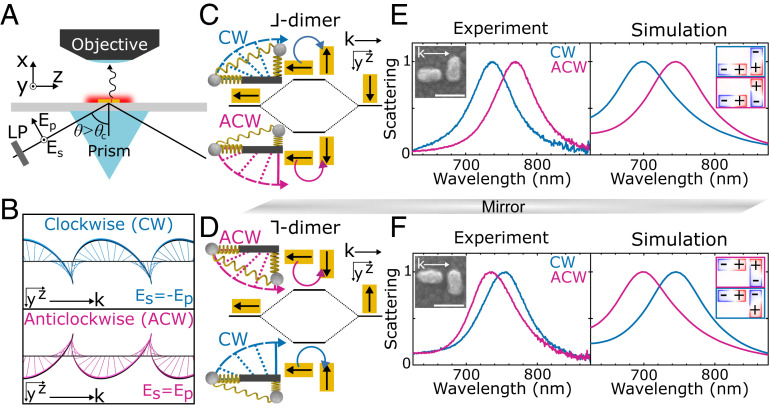Fig. 2.
Orthogonal and offset nanorods are a model system for observing trochoidal differential scattering. (A) Experimental TIR geometry. LP: linear polarizer, Es, Ep: incident electric field components, : angle of incidence. (B) Isolated in-sample-plane components of the evanescent wave for Es = −Ep and Es = Ep incident polarizations, tracing CW and ACW trochoids, respectively. (C) Plasmon hybridization for the ⅃-dimer. The light-induced electric dipoles are shown with black arrows and are excited opposite with respect to the electric field, with the curved arrow solely indicating the trochoidal polarization. Excitation from a CW (ACW) trochoidal field gives a high (low) energy antibonding (bonding) mode. In the corresponding spring system, attached masses are positively charged and are attracted toward the trochoidal electric field drawn with dashed lines and curved arrows. (D) Plasmon hybridization for the mirror-image ⅂-dimer. Normalized measured and simulated scattering spectra of the (E) ⅃-dimer and (F) ⅂-dimer under CW and ACW trochoidal excitation. (Insets) Correlated scanning electron microscopy (SEM) images with scale bars of 100 nm and charge distributions calculated at the scattering maxima for CW and ACW trochoidal excitation, matching the black arrows in C and D.

